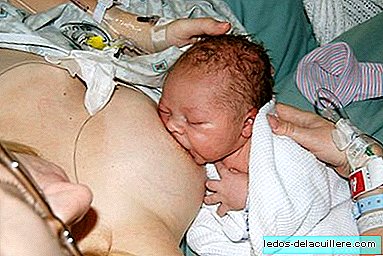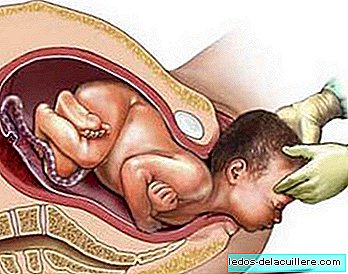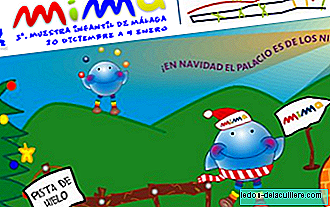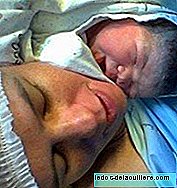
"The child does not catch me ... and for milk it will not be, because I have boobs to burst." This is a relatively common phrase in the postpartum period, when the mother's milk rises and the breasts are filled so much that the child is not able to take the breast.
The rise in milk usually takes between 1 and 3 days. The time it takes to give and how much it can bother depends largely on how breastfeeding is established. If a baby takes a good breast as soon as it is born, if it is in the room with the mother 24 hours a day and if it meets the baby's demands by offering the breast without limitations or schedules, the rise in milk usually bothers little or nothing. So much so that sometimes there are mothers who, so well that they are doing so, doubt whether they are giving milk to their children because "I have not noticed the rise, so I do not think they have milk."
On the other hand, there are moms and babies whose breastfeeding is more difficult, that they take perhaps worse, or who have been limited in breastfeeding by a bottle (in bad time), by absurd schedules (give it every 2-3 hours) or by a mother who has tried to calm the crying in another way because “he has eaten recently, he cannot be hungry” and even because he has received (the mother) some serum by intravenous dropper before giving birth (there is more fluid in the body and the engorgement worsens ). For these moms the rise in milk can be very annoying because the breasts get hard, almost like stones and at that moment, when it is interesting that the baby empties them, he is unable to catch himself (try to suck on a ball, see who gets it).
For these moms and for these annoying and distressing moments there is a solution: reverse pressure softener.
What is inverse pressure softener (PIS)
Yes, I know that the name brings them, I imagine it is a very literal translation of English and in Spanish it sounds weird. In any case, the important thing is not your name, but your task.
The reverse pressure softener It is a very simple maneuver that can be very useful for inexperienced moms whose breasts become too engrossed. It consists of applying a positive pressure on the breast areola in the area around the nipple. With this pressure, what is achieved is to slightly move the swelling back and into the chest. In this way the area of the areola and the nipple is temporarily half empty of the edema and therefore less hard, more flexible and with the possibility of being sucked by the baby. It is thus possible to facilitate the extraction of milk by the baby, the risk of nipple wounds is reduced, because the baby can be better caught and helps to calm the engorgement because it gradually empties.
Why the use of a breast pump is not recommended
In case of major breast engorgement the use of breast pumps could be contraindicated because, although a priori take out the milk relieves, the operation of a breast pump is not equal to the mechanism of sucking and swallowing a baby and aspiration can make part of the excess fluid in the chest go to the areolar area, even reaching press the subareolar ducts in such a way that it is difficult (or impossible) to express milk. This happens especially when high suction levels are used with an electric breast pump.
How the inverse pressure softener is made
The best time to perform the PIS is just before the baby clings to the chest. This technique can be done by anyone, including of course the mother, for that they are her breasts. There are three different ways to do the PIS:
Two-handed and one-step method

Nails should be short so as not to risk damaging the nipple or areola. The index and ring fingers touch each other above and below the nipple and the middle fingers touch each other to the side of the nipple. With this position pressure is made to the chest. This is usually the most comfortable position for moms who do it themselves.
Two-hand and two-step method

Two or three straight fingers are placed on each side of the nipple and pressure is applied. After a while the fingers move 90 degrees and the action is repeated above and below the nipple.
Two thumbs and two steps method

The thumbs are placed on each side of the nipple and after pressing for a while the fingers move to the upper and lower parts to press again. This method cannot be done by the mother for obvious reasons, so it must be another person who applies it.
Some recommendations and considerations
- The necessary pressure time depends on the hardness and the swelling state of the areolar tissue (it can range from one or two minutes to 10 or 20 if necessary). The goal is to keep it soft.
Other strategies before breast engorgement
The reverse pressure softener It is one of the strategies that work best when there is breast engorgement, but it is not the only one and it is usually advisable to do it in combination with others.
As I do not want to extend much more, but I want to explain why they can help, I leave them in a few days.












